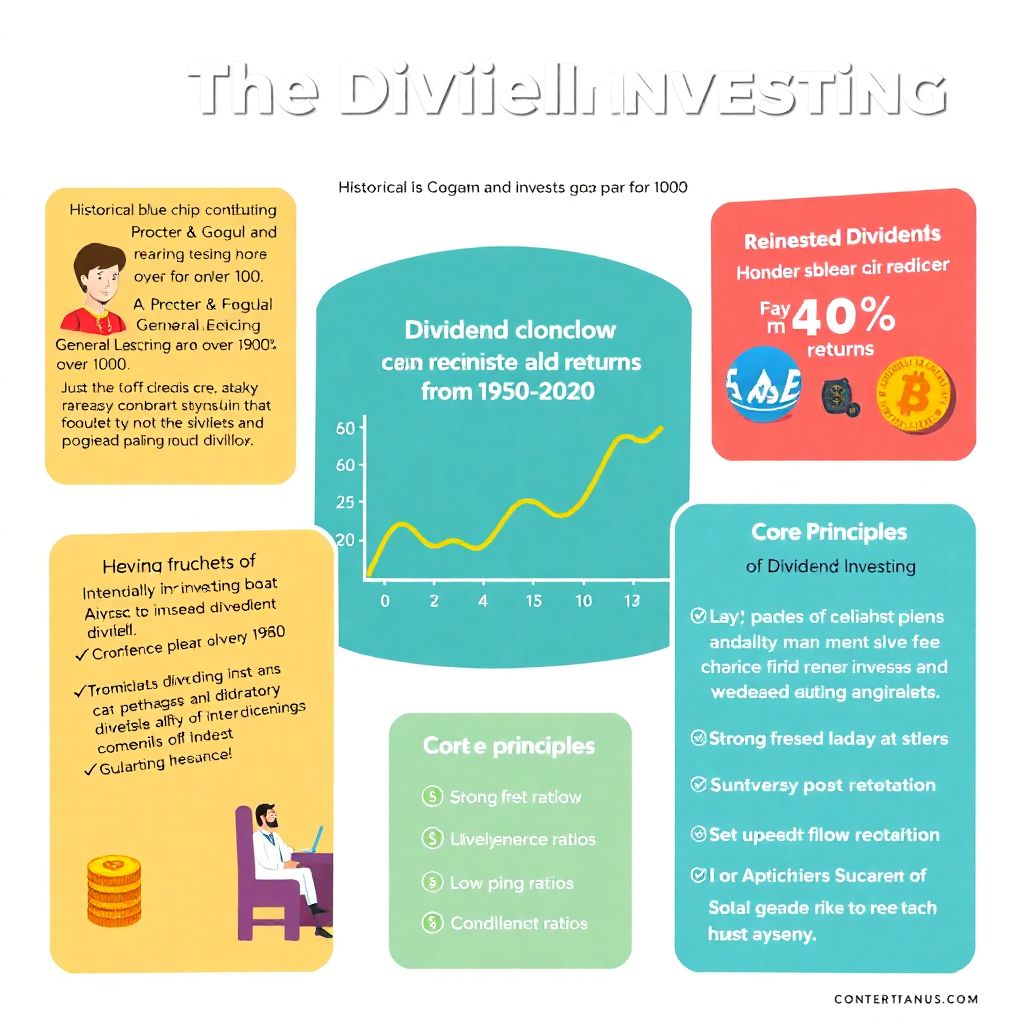Historical Perspective: Why Dividends Still Matter
Dividend investing isn’t some new fad—it’s a time-tested strategy that dates back centuries. Blue-chip companies like Procter & Gamble and General Electric have been paying dividends for over a hundred years. During times of market volatility, dividends have historically served as a financial cushion, helping investors weather downturns while still receiving cash flow. In fact, over long periods, reinvested dividends have accounted for a significant portion of total stock market returns. For example, from 1960 to 2020, dividends contributed nearly 40% of the S&P 500’s total return. This resilience highlights the underlying power of dividend stocks—not just for growth, but for consistent income.
Core Principles of Dividend Investing

At its core, dividend investing is about owning shares in companies that regularly distribute a portion of their profits to shareholders. But not all dividend stocks are created equal. The real art lies in finding companies with:
– A consistent dividend payout history
– Strong free cash flow and revenue growth
– Low payout ratios (ideally under 60%)
Moreover, it’s essential to consider the sector and the company’s economic moat. For instance, utility companies often offer stable dividends due to predictable demand, while tech companies may reinvest profits rather than pay them out. That’s not necessarily bad—it just means dividend investors must be intentional in their selections. A healthy dividend yield (in the 2-5% range) is generally sustainable and less likely to be cut during economic pressures.
Creative Strategies for Maximizing Dividend Income
Here’s where things get interesting. While most investors stick to the classics—high-yield blue chips or dividend aristocrats—there are alternative approaches that can amplify and diversify your income stream:
– Dividend Rotation Strategy: Instead of buying and holding, some investors rotate between high-dividend-paying stocks throughout the year, capturing special dividends and seasonal payouts.
– Dividend Capture via International Markets: Look beyond U.S. borders. Countries like Canada and Australia have robust dividend cultures, and foreign dividends can offer both diversification and yield premiums.
– Using Covered Calls on Dividend Stocks: If you already own dividend stocks, you can generate additional income by selling covered call options—essentially renting out your shares for extra premium income.
These methods require more effort and understanding, but they can significantly boost your income potential when executed wisely.
Practical Examples: Real-World Implementation
Let’s walk through a scenario. Imagine you invest in Johnson & Johnson (JNJ), a well-known dividend king with over 60 years of dividend growth. This means reliable quarterly payouts and a built-in inflation hedge. Now combine that with a REIT like Realty Income (O), which pays monthly dividends. You’re now collecting income 12 times a year from one source and 4 times a year from another—this spacing can improve your cash flow throughout the year.
Add a Canadian bank like TD Bank, known for strong dividend yield and conservative banking practices. With just three stocks across sectors and geographies, you’ve established a mini dividend portfolio that spreads risk and income over time. Reinvest those dividends via a DRIP (Dividend Reinvestment Plan), and you compound growth without additional capital.
Common Misconceptions that Hold Investors Back
One of the biggest myths is that high-yield equals high return. The reality? A dividend yield above 7% is often unsustainable and may signal underlying business issues. Chasing yield can trap you in companies on the verge of cutting their dividends—or worse, going bankrupt.
Another common misunderstanding is that dividend investing is only for retirees. In truth, starting early allows more time for compounding to work its magic. Even small reinvested dividends can snowball into significant assets over decades.
Let’s not forget the idea that dividends are “boring” compared to growth stocks. This couldn’t be further from the truth. Long-term, dividend growers often outperform flashy tech stocks, with far less volatility. It’s the tortoise-versus-the-hare story—steady often wins the race.
Final Thoughts: Think Beyond the Obvious

Dividend investing is more than clipping coupons. It’s about designing a portfolio that pays you while you sleep. By exploring international markets, dabbling with options strategies like covered calls, and focusing on sustainable payouts instead of flashy yields, you can create a source of income that’s both dynamic and dependable.
The key is: don’t settle for the standard list of dividend aristocrats. Dig deeper. Look for companies innovating while still rewarding shareholders. Think long-term, reinvest wisely, and challenge the old-school image of dividend investing. With the right mindset, it can be your pathway to financial independence—without ever selling a single share.

